The State of Nature 2019, created in partnership with over 70 organisations, was released last week. It assesses the distribution and population of over 7,000 species, the impacts of climate change and pressures on the UK’s biodiversity. Nida Al-Fulaij, Grants Manager, and dormouse monitor, at People’s Trust for Endangered Species, explains why monitoring mammals in the UK is so important- and often not as easy as it may sound!
A unique programme
Trampling through bramble bushes and scrambling over fallen trees may not seem the best way to spend a weekend, especially when it’s raining. But that’s what over 1,000 people do every month throughout the year in order to find out how our national hazel dormouse population is doing.
Just three weeks ago, a group of 25 volunteers met in our traditional semi-natural ancient woodland on the Isle of Wight to check 600 boxes to see if hazel dormice were present. Our woodland, Briddlesford Woods, is one of over 600 sites registered within the National Dormouse Monitoring Programme, run by People’s Trust for Endangered Species (PTES). It is one of the longest running monitoring programmes for any terrestrial mammal in the UK, running since 1993. By checking wooden nest boxes at the same sites annually we can compare the population at different sites. We also generate a trend on the population to see how the species is faring at a national level.

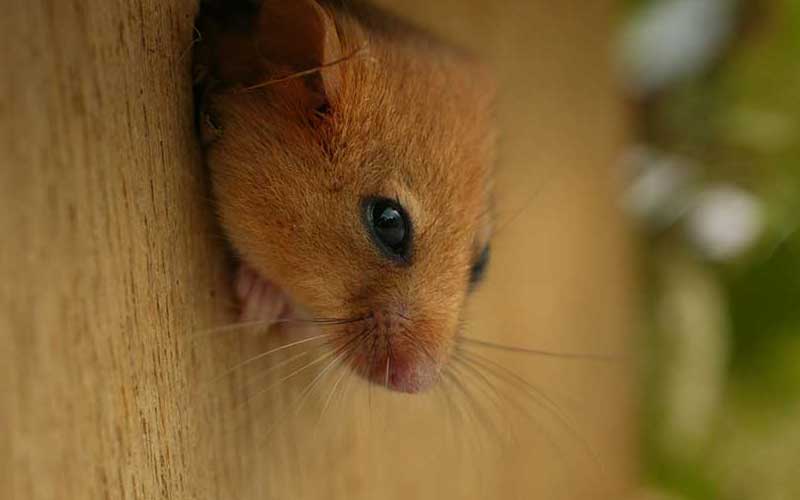
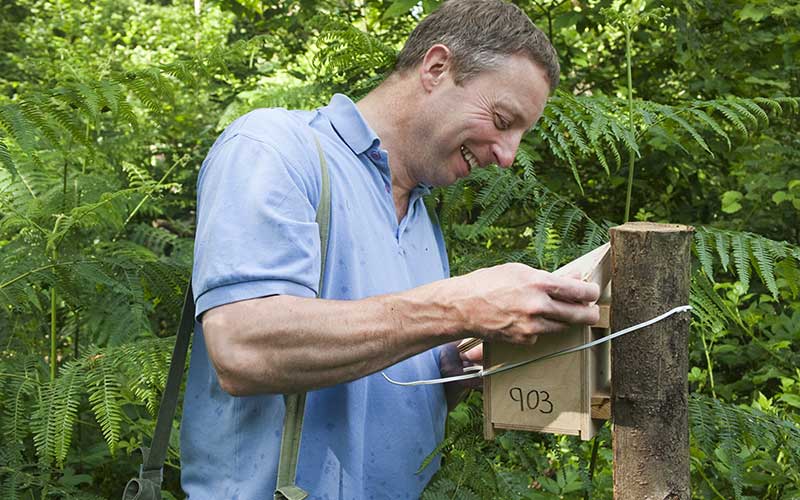
Gathering long term data
Hazel dormice are both nocturnal and arboreal so they’re pretty difficult to monitor. However, using back-to-front bird box designs it’s possible to encourage dormice to use nest boxes and then compare how many animals are found each year.
Unlike wood mice and bank voles, dormice are relatively long-lived and slow breeders. This means that they are particularly vulnerable to poor breeding years, and wet summers where food is less available. Which makes it even more important to gather long-term trend data on the species.
Since the species is protected, anyone wanting to get involved with the monitoring programme has to spend time training and demonstrate they understand the ecology and habitat requirements of dormice. This ensures that monitors have an understanding of the wider conservation needs and can spread the message, particularly to the land owners and woodland managers who look after the habitats that dormice live in.
Dormice prefer the new growth of woody vegetation that grows after woodland management such as coppicing, ride widening, thinning or glade creation. In the UK, they tend to favour old coppice woodland but they’re also found in scrubland, old hedgerows and sometimes conifer plantations. They used to be found across England and Wales but are now predominantly found in the south, although PTES is working hard with regional partners to release captive-bred populations back into counties from which they’d become extinct.
The methods to monitoring mammals
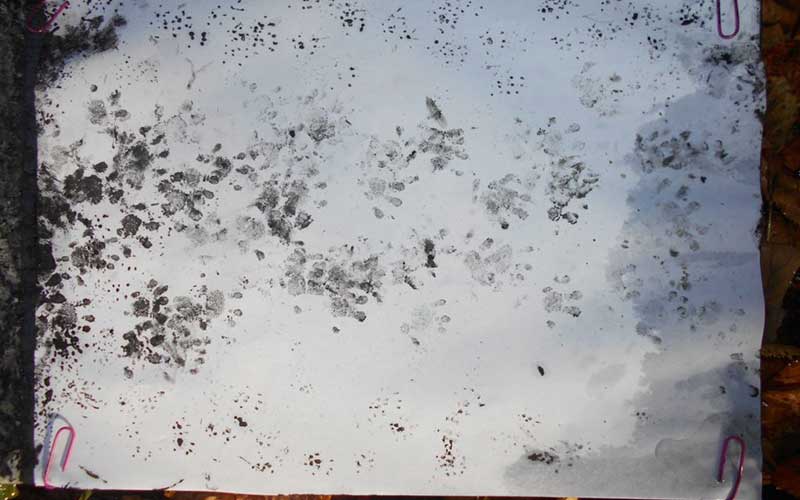
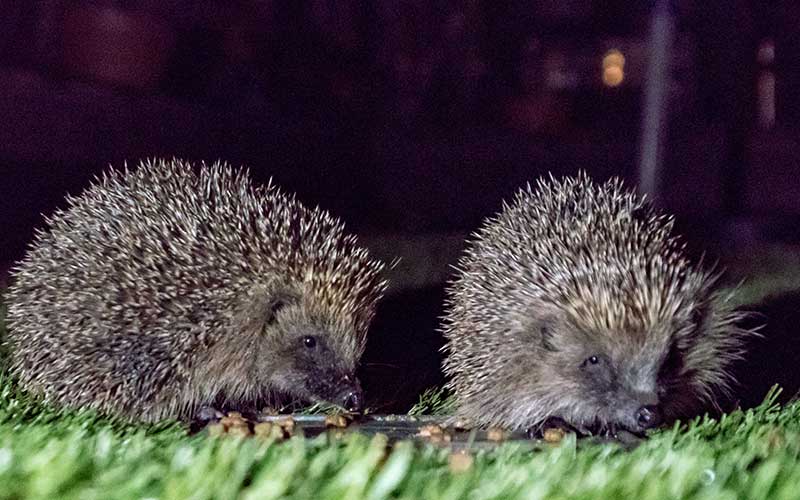
PTES funds much research on developing monitoring methods for different species so that we have an understanding of their distribution and their relative numbers in different parts of the UK.
Recently we have supported the development of footprint tracking tunnels for hedgehogs and hazel dormice. And PTES is supporting new methods to assess populations of hedgehogs in both urban and rural areas.
The Random Encounter Model (REM) method involves placing a number of camera traps at locations across a survey site. The aim is to capture images of a minimum number of individuals of the target species. Usually this is a species like hedgehogs that are hard to tell apart.
Survey effort, camera detection rates, the area covered by the cameras and the distance travelled by individual animals are then combined to estimate population density. It’s complicated but it beats wandering around at night looking for them by spotlight.
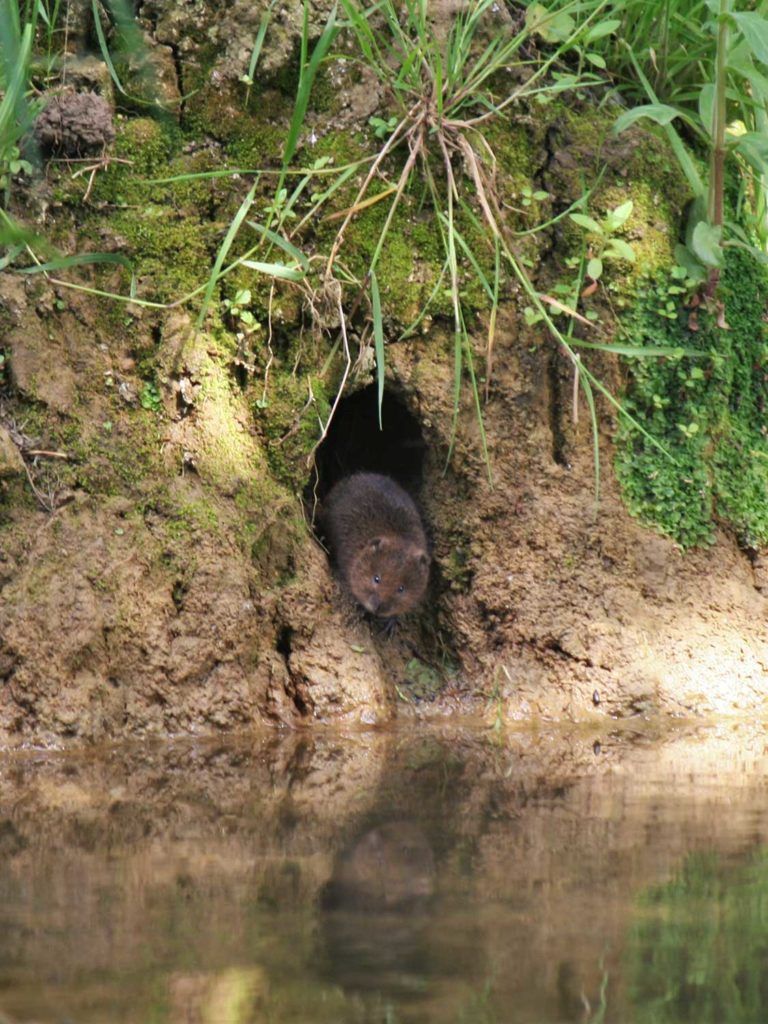
Water voles are another species we gather data on. The National Water Vole Monitoring Programme is seeking volunteers to surveys sites annually that were originally surveyed in the 1990s to understand how local populations of water voles are doing. It has been running for five years but we need more volunteers to help us increase the amount of data we collect and better understand where these species are doing well and where they need our help.
If you could spare some time to save our precious wildlife please get involved with a PTES survey via the link below.
